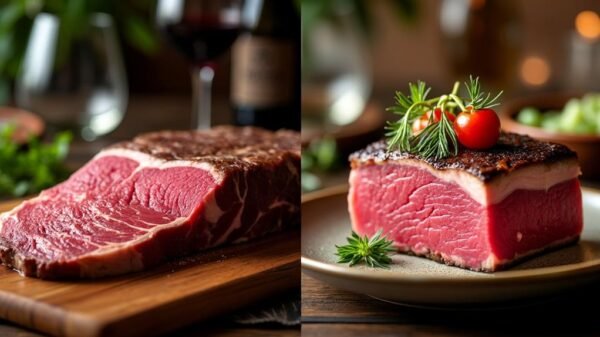The Fascinating Journey of the Hamburger: A Culinary Icon
When one thinks of the modern hamburger, images of grilled patties tucked between soft buns typically come to mind. Surprisingly, the tale of this beloved dish stretches back centuries, traversing cultures and continents. It’s a history that is as juicy as a perfectly cooked patty and deserves a closer look.
The Origins of the Hamburger
The name "hamburger" is derived from Hamburg, Germany, where minced beef was popular. In the 19th century, German immigrants introduced this concept to the United States. They brought with them a recipe for “Hamburg steak,” a dish made from finely chopped or minced beef that was served raw or lightly cooked. However, the transition from Hamburg steak to the hamburger as we know it today took some time.
A Culinary Evolution
As the 20th century dawned, the need for quick, convenient meals surged with the rise of industrialization. The first recorded instance of the hamburger being served in a bun is often attributed to Louis Lassen, a Danish immigrant who opened a small lunch wagon in New Haven, Connecticut. In 1900, he began serving a ground beef patty between two slices of bread, catering to the demand for a portable meal. This marks a pivotal moment in culinary history, as the hamburger became a staple for busy Americans.
Global Influences: From Genghis Khan to Rome
Interestingly, the roots of the hamburger stretch back further than the 1900s. Some historians trace its origins to the Mongol Empire, where Genghis Khan’s troops would enjoy raw minced meat, a culinary practice that evolved over centuries. Additionally, ancient Romans had their version of meat patties, known as "isicia omentata," made with spiced minced meat. These early forms of ground meat foreshadowed the eventual development of the hamburger, showcasing that the love for ground beef transcended geographical boundaries.
The Silk Road Connection
The migration of ideas and foods along trade routes also played a role in the hamburger’s evolution. The Silk Road facilitated the exchange of culinary practices between the East and the West. Spices, cooking techniques, and various forms of meat preparations were shared, contributing to the diverse ways meat was consumed, including the development of patties.
The Modern Hamburger Takes Shape
By the early 20th century, regional variations of the hamburger began to emerge across the United States. In places like Kansas City and Los Angeles, unique toppings and cooking methods were introduced. This creativity led to the establishment of iconic brands such as McDonald’s and Burger King, which have popularized the hamburger on a global scale.
Fast forward to the present day, and the hamburger is more than just a meal; it has become a cultural phenomenon. Today’s burgers range from the classic cheeseburgers to gourmet versions featuring exotic ingredients. Chains like Shake Shack and In-N-Out Burger have made their mark, each offering a different take on the iconic dish, showcasing America’s diverse culinary landscape.
More than Just a Quick Meal
The hamburger’s evolution reflects broader societal trends, including labor shifts, urbanization, and changing dining habits. Its ability to adapt—integrating new flavors and cooking methods—has secured its place in the hearts (and stomachs) of many around the world. Whether enjoyed at a backyard barbecue or in a fine dining setting, the hamburger continues to be a symbol of culinary innovation.
The journey of the hamburger is a testament to the blending of cultures and the continuous transformation of food. It’s not just a sandwich; it’s a representation of history, migration, and the collective palate of a global society. As you savor your next burger, consider the rich tapestry of influences that have shaped this simple yet profound dish.






































